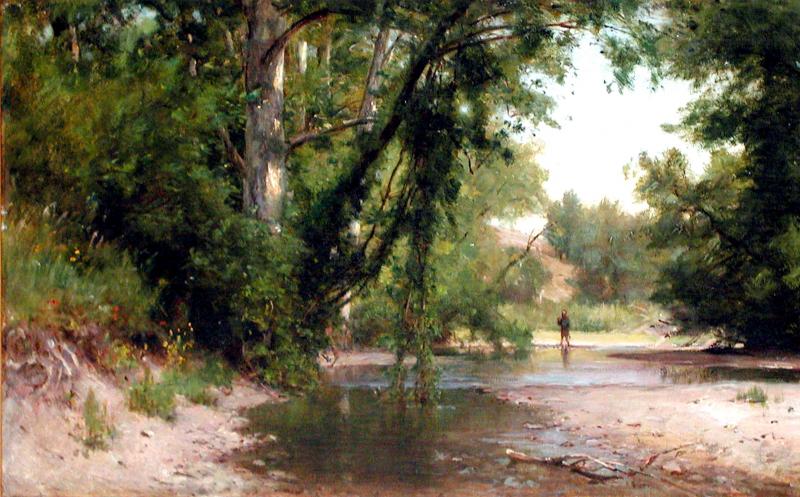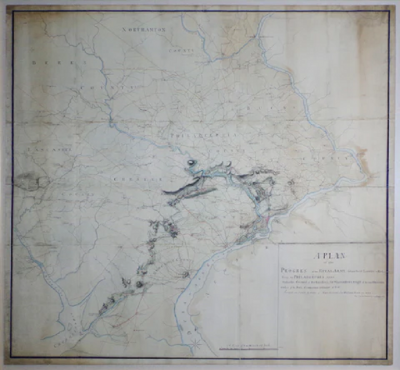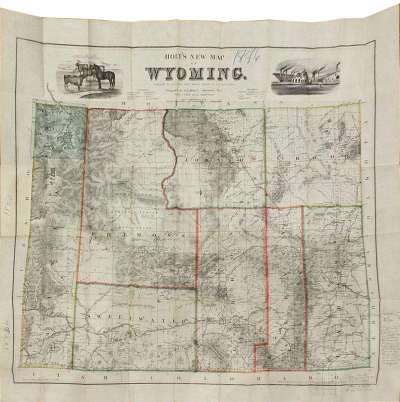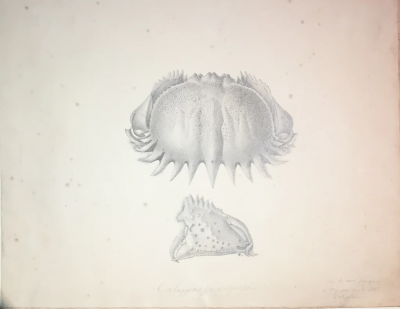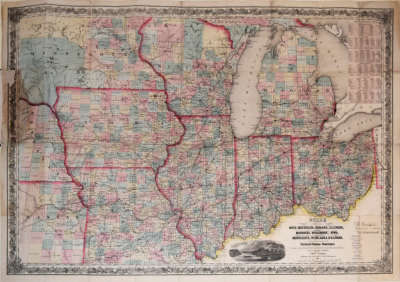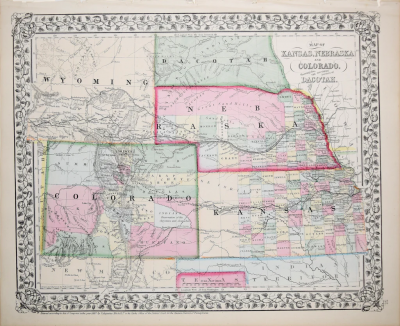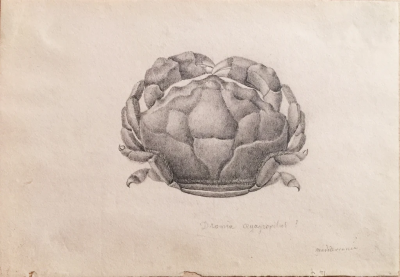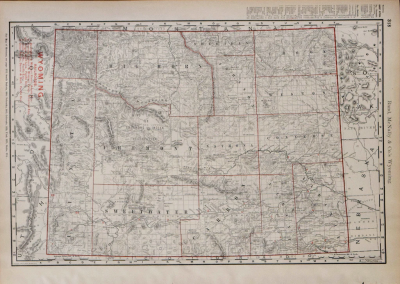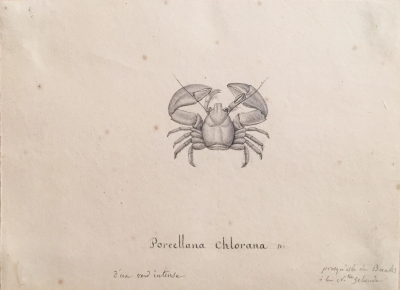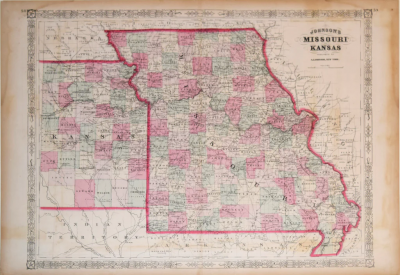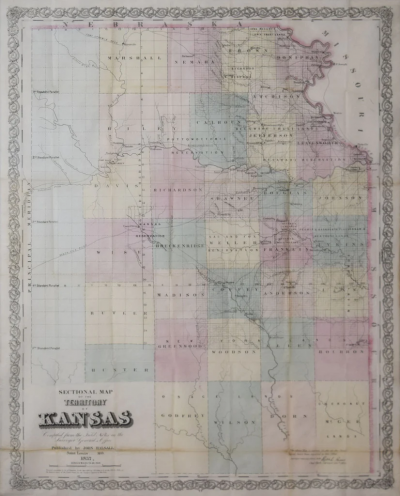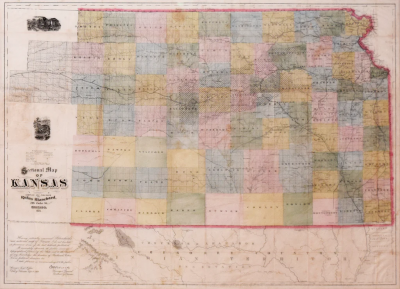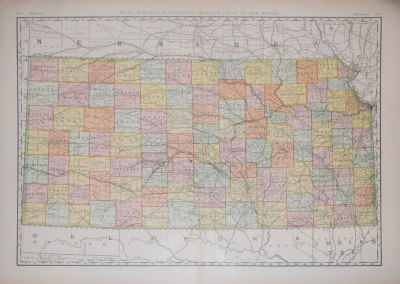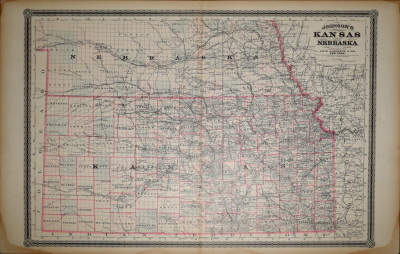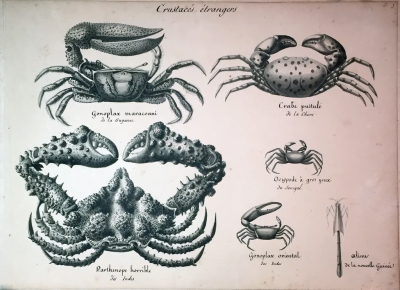River Scene
-
Description
Framed size: 21 13/16” x 30 5/16”
Signed lower right: W. Whittredge
One of the core painters of the Hudson River School, Thomas Worthington Whittredge is best known for his evocative and quietly splendid landscapes. Born on a family farm near Springfield, Ohio, he received little formal education and at first trained as a house and sign-painter in Cincinnati. Other careers followed including a stint as a daguerreotypist in Indianapolis, Indiana, and as a portraitist in Charleston, West Virginia. However, in 1844
Whittredge was to find his passion, landscape painting, and he was to follow this calling until his death in 1910.
Like many nineteenth-century American landscape painters, Thomas Worthington Whittredge bore a deep and abiding love for his homeland and its majestic scenery, and like Albert Bierstadt, found the expression of his ardor in the style of the European Romantics at the Düsseldorf Academy. While he was never to formally enroll in classes, Whittredge befriended many of the Academy's teachers and students and was to learn much from Emanuel Leutze, Carl Friedrich Lessing, Andreas Achenbach and of course, Albert Bierstadt. His ten years of trav- el and study through England, France, Belgium, Germany and Italy were to prove invaluable upon his return to New York in 1859, and he quickly rented a space at the Tenth Street Studio Building where Thomas Buchanan Read, William Holbrook Beard, Sanford R. Gifford, William Stanley Haseltine and Albert Bierstadt were already situated.
His vision of the American landscape was further advanced after becoming a member of the Century Association, in 1862. Now,Whittredge was not only affiliated with the leading members of the artistic movement in America, but also with its literary intelligentsia, whose ideas helped to further shape his interpretation of the American landscape.
The artist expressed, in visual form, contemporary thoughts regarding the interrelationship of nature and history in America. For him as well as many of his artist friends, the unparalleled American landscape was both a determining factor and a symbol of the country's distinctiveness and independence.
Whittredge's River Scene presents an excellent example of the painter's intellectual and practical training. In
1866, he accompanied General John Pope on an inspection of Indian settlements after the civil war, traveling from
Fort Leavenworth, Kansas, up the South Branch of the Platte River through Colorado and onwards to New
Mexico. It is possible that this painting was completed as a result of the expedition. In River Scene the composition
follows a technique derived from Claude Lorraine and practiced by many English, German and Scandinavian
artists of the nineteenth century. A circle of brilliant sky is surrounded by darkened woodland and reflected in the
glistening stream. Whittredge's use of the Claudean convention, provides a scene imbued with beauty and seren-
ity, reinforcing the myth of America as a new Garden of Eden. Moreover, the figure in the middleground, reflects
a fascination with native American people and their harmony with nature, which was also shared by such figures
as George Catlin, Karl Bodmer, Thomas Loraine McKenney and James Hall.
THE GREENLAND WHALE FISHERY AS DEPICTED -
More Information
Documentation: Period: 19th Century Creation Date: c. 1866 Styles / Movements: Hudson River School Incollect Reference #: 98444 -
Dimensions
W. 19.25 in; H. 10.31 in; W. 48.9 cm; H. 26.19 cm;
Message from Seller:
Founded in 1971, Arader Galleries is the leading dealer of rare maps, prints, books, and watercolors from the 16th to 19th centuries. Visit us at 1016 Madison Avenue, NYC, or contact us at 215.735.8811 | loricohen@aradergalleries.com |















